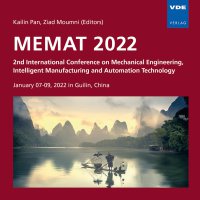Investigate the Differences Between both the U-Turn and The Lane-Change of BMWM3 and Chevy Cavalier
Conference: MEMAT 2022 - 2nd International Conference on Mechanical Engineering, Intelligent Manufacturing and Automation Technology
01/07/2022 - 01/09/2022 at Guilin, China
Proceedings: MEMAT 2022
Pages: 10Language: englishTyp: PDF
Authors:
Gao, Yang (Shanghai Pinghe School, Shanghai, Shanghai, China)
Liu, Enze (University of Shanghai for Science and Technology, Shanghai, China)
Zhang, Haochen (University of Science and Technology Beijing, Beijing, China)
Abstract:
With the great progress in technology in the past decade, many different types of car models emerged in the market. There are many precursors investigating the turning of the cars. The purpose of this essay is to explore the turning differences between the two typical car models – BMWM3 and Chevy Cavalier – for both linear and non-linear model of U-turn and lane-change. We first build a physical model of an arbitrary car, obtaining the expressions for different physical values, such as the slip angle, force exerting on the front tire and the rear tire, acceleration or position of the center of the mass, etc. Then, we construct the model in Python, substitute the real values for the two types of cars. The performances of the two cars are displayed by plotting graphs, including slip angle versus time graph, force versus time graph, as well as the trajectories of the cars. We find that the trajectories as well as the angle of both U-turn and lane-change for the two cars are totally different. Our results show that Chevy Cavalier has a more acute trajectory and a more significant lane-change than BMWM3.


